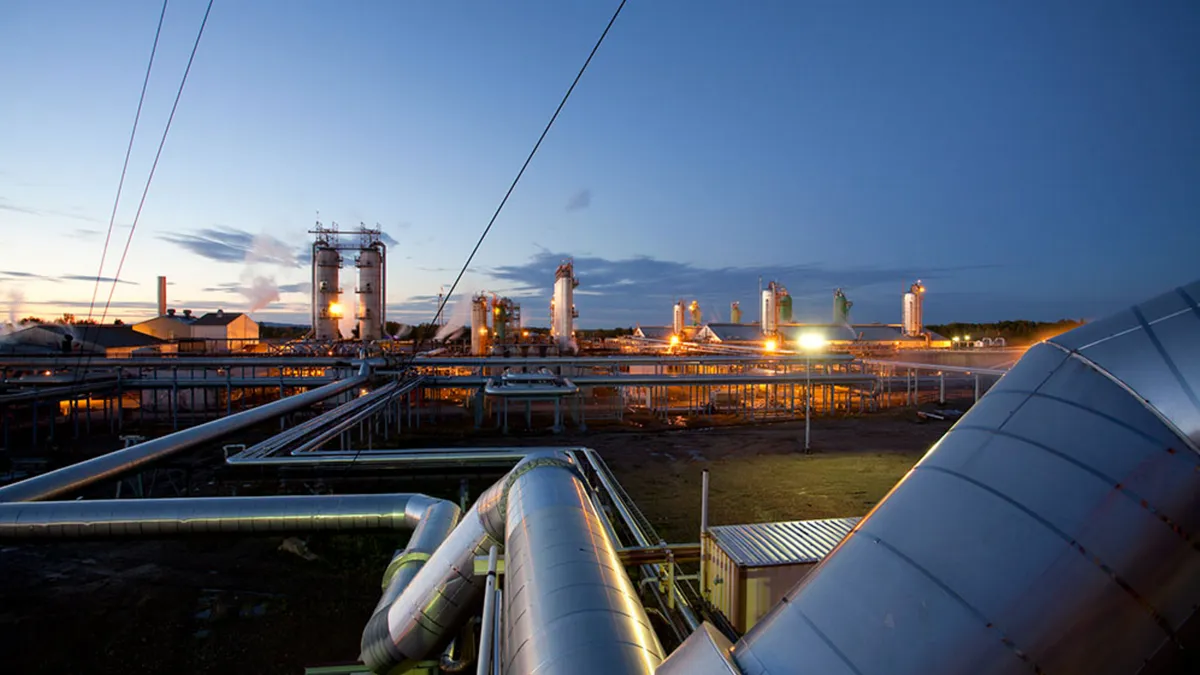Dive Brief:
- Arizona Corporation Commissioner Andy Tobin criticized Arizona Public Service's plans to increase natural gas generation in a letter regarding the utility's upcoming Integrated Resource Plan earlier this month. Tobin encouraged a "a more balanced and forward-looking perspective" for the IRP, including more storage and demand-side management.
- In its preliminary IRP, APS says it will need to expand its current 363 MW of gas generation to 2,611 MW by 2022 and 5,229 MW by 2032 to meet rising power demand. By comparison, the IRP calls for 62 MW of renewable energy and storage investments by 2022, and 288 MW by 2032.
- In a separate letter, Tobin wrote in favor of revisiting the state renewable portfolio standard, supporting a decision to open a docket to re-examine portions of it and endorsing a proposal from the state consumer advocate to mandate that a certain portion of renewable resources deliver power during peak demand periods.
Dive Insight:
As Arizona's power demand and renewable energy penetrations both rise steadily, Tobin and the state consumer advocate — the Residential Utility Consumer Office (RUCO) — are both seeking ways to align clean resources with peak demand, cutting down the need for costly gas peaker plants.
In his letter, Tobin wrote that APS's plans to increase gas generation could "increase the risk of higher energy prices that have been historically unstable," and that ratepayers "would also be forced to pay the unnecessary costs for idled generation infrastructure used a fraction of the year."
The utility plans to increase its natural gas generation by more than 4 GW over the next decade.
Instead, Tobin pushed the utility to identify options to meet demand that are "less expensive and less risky for customers."
The utility should run more resource cost calculations, better study distribution system needs and analyze how the state could use California's booming renewables generation to cut daytime power prices, he said.
One way to do that could be to alter Arizona's renewable standard, Tobin wrote in his second letter, throwing his support behind the RUCO proposal. Under that plan, a certain portion of renewable resources would have to deliver power during peak demand hours, creating an incentive to add energy storage.
"By properly setting goals that allow all renewable and carbon-free energy technologies to compete as the least cost resource to satisfy system peak, the Clean Peak Standard elegantly contemplates space for market forces to provide the largest menu of energy options for all Arizonans," he wrote, "especially those who live in our rural areas."
Tobin's letters come as recommendations in the ongoing dockets on APS's IRP and the state's renewable energy standard. ACC's Chair Doug Little had earlier proposed doubling the standard to 30% renewables by 2030 while eliminating, carve-outs for distributed resources, a move likely to attract fire from the rooftop solar industry.
Correction: This article has been updated to reflect that APS does not plan to increase its natural gas generation capacity by ten times over the next decade. The utility plans to add over ten times more gas generation from 2016 to 2027 than it will in 2017 alone.














